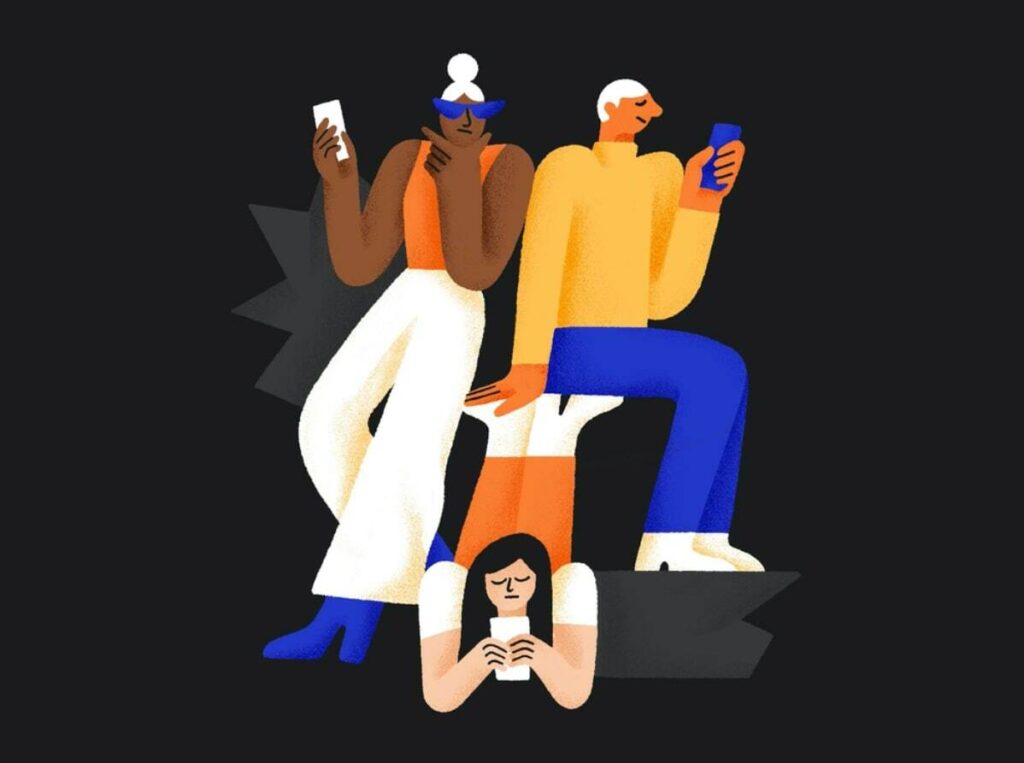Top Mobile App Promotion Strategies | Mobio Group

The global mobile app market continues to grow rapidly, with downloads reaching 230 billion in 2021. The average time spent by users on their phones increased by 30% to 4.8 hours per day, almost a third of a person’s daily active time. As a result, people are spending more and more money on apps. In 2021, for example, the United States of America stood out: their users spent 30% more money, which is about $43 billion. The mobile app advertising market is not far behind, with ad spend up 23% in 2021 to $295 billion. Such growth rates indicate that mobile marketing is in the active phase of its development, which means that mobile application promotion strategies and methods are being improved, new teams are emerging, and advertising and tracking systems are constantly being improved. So, let’s talk about the top mobile app promotion strategies.

In the four “P”s of marketing (Product, Price, Place, Promotion), the first item on the list is the product, so in a mobile app development strategy, we also recommend focusing not only on promotion, as often happens, but also on the product itself: make it useful for the audience, increase the time that the user spends inside the application, maintain activity, be able to properly monetize and retain customers. These factors determine the existence, further growth, development and prospects of the product for a long period of time in the future.
Today we will talk about the most well-known mobile application promotion strategies, how to attract new users, retain old ones, increase their LTV and, as a result, increase the reward from your advertising campaign. We will also look at the main methods of attracting traffic and increasing conversions at each stage of the sales funnel that exist today.
Mobile App Marketing Strategy
Any mobile application marketing strategy should be comprehensive and ideally should include as many acquisition channels as possible, as they affect the conversion at each stage of the sales funnel, which in turn determines the payback of the mobile application.
Main Promotion Stages
1. The product itself
At the stage of conception and creation of the application, there should already be an understanding of how its owners and developers will monetize it. This can be direct sales of goods, subscriptions, or attracting a large wide audience for subsequent display of ads in the same application using in-app networks. Also, developers must decide what value the application should bring to the user, be visually attractive, have an intuitive interface, work correctly, and not have any flaws, bugs, and other shortcomings. We, in the agency, when working with clients, sometimes encounter such moments that are listed above and, of course, this affects further promotion, the cost of referred users for the client and the profitability of the applications themselves.
It is also necessary to follow the feedback from users, who themselves often point out shortcomings, weaknesses, and options that do not work correctly. It is very important to listen to your audience, quickly fix problems, so that in the eyes of customers there is an understanding that the developers hear them, make changes to the product without delay, and thus are open and loyal to their customers. This inspires trust, positive perception, influences people’s recommendations to each other, positive reviews, high ratings and, as a result, the rotation of the application in the stores.
Often, customers, showing what they are interested in, which section of the application they spend more time in, what they pay money for, they demonstrate what is important and attractive to them. If you carefully monitor these indicators and constantly analyze them, then the users themselves can often tell developers the further direction of the application promotion: which sections to develop more, what customers are willing to pay for, and on which pages they will spend their time more.
The mobile application development strategy should take into account the above aspects, as they affect specific numerical indicators that are measurable and allow not only to intuitively draw some conclusions, but also specifically confirm this with numbers.
Of these indicators, the most commonly used are interconnected and influencing each other:
- LTV
- Retention Rate
LTV is the lifetime value of a customer. LTV shows the profit from the relationship with the client for the entire period — from the moment when he saw the first ad or stumbled upon the application in the store and until the last purchase/subscription.
It is more profitable for the user not to perform some action once, but to use the application on a regular basis, periodically return and spend more time inside the application, so over a long period of time it will bring more profit to the developer, which will benefit both.
If the user is loyal, involved and satisfied with the service provided, then this will positively affect the subsequent stages of promotion. The client will leave positive reviews, maintain a high rating of the application in the store, which in turn will help increase the conversion of already new users — no matter what traffic sources they come from, they will somehow be redirected to the store and will inevitably stumble upon the application and want to get the opinion of other users.
Retention Rate shows how long loyal customers stay in the application. This is an important metric, as it reflects the interests of a more loyal audience that makes repeat sales, which helps increase profits and attract new customers through recommendations.
Also, at the application development stage, it is worth considering which stages of the sales funnel will be built into it, it is advisable to create separate events for them and set up their transfer to the mobile tracker you use. The more events are transmitted, the more detailed along the chain it will be possible to track at what stage conversion drops occur, understand what customers don’t like or repel, and then analyze why this happens.
In general, as practice shows, there is a negative correlation between the number of sales funnel stages and the percentage of conversion to the final action. Therefore, you should not create more funnel stages here than necessary. The more actions a person needs to do, the less likely it is that the target action will occur. This is especially true now, when the average user has dozens of different applications on a mobile device and there is competition for a person’s attention, similar to banner blindness.
2. Promotion in organic traffic
Organic traffic is when a person purposefully searches for a specific application in the stores that could solve his problem. Such customers are the most loyal, as they themselves have formulated their need and found the application necessary for this, which is just created in order to satisfy this need.
The number of installs for a limited period of time affects the rotation of the application in the tops, getting into the “recommended” and displaying on the first lines in the search for certain keywords.
It must be understood that more than half of the installations are for applications that are in the first two or three places on the list. Accordingly, if your application is not there yet and it is new, then it will not be easy to break into the top just because your application may be better than its closest competitors in some ways.
The main tool here that solves this problem is incentivized traffic — this is when real people are paid to complete the installation. Thanks to this, the store sees that users install your application for certain key queries, which helps to promote it higher in the lists.
3. Promotion in paid traffic channels
The main two groups of paid channels are:
- Social networks and search engines such as Meta (Facebook), Google Ads, TikTok, Snapchat, My-Target, Vkontakte, Apple Search Ads (can also be classified as search engines).
- In-App sources (advertising inside mobile applications). It is logical that the target audience of mobile applications are those who are already actively using them. The main In-App networks are: Unity, Ironsource, Vungle, Appnext.
Different sources offer different sets of ad formats, targeting settings, machine learning elements, and smart algorithms that allow you to reach your target audience more efficiently and do it at a lower cost so that your advertising campaign is more profitable.
Practice shows that in paid traffic channels, the creative plays the main role, since it is the creative that gives the first impression of the advertised object, forms an initial understanding of its value, arouses interest and encourages to click, go to the store and continue to get acquainted with the product further. This can be quantified by CTR (click-to-impression ratio). Of course, it does not guarantee an excellent conversion to a target action, purchase/subscription, etc., as it may simply look beautiful and attractive, but not give an understanding of what the user will receive, but it can be used as a kind of initial guideline.
The second most important factor is audience reach. The application should ideally be designed for a large audience. It has its own number for each source, but it should not be, for example, some kind of local non-chain store near the house where you can pre-order.
If we look at the geo, then actually the coverage of the target audience should be at least one city and preferably a million people. Low reach makes CPM (cost per mille) very expensive and app advertising will be too expensive for such a business.
Other factors are more individual and depend on the specific case. In practice, most often they can improve the result by several times, but reduce the cost of an attracted client by dozens of times. Compared to the initial launch for a wide audience, without individual targeting settings and white/black sheets (in-app sources), it will be much more difficult. Therefore, you need to evaluate the economics of your project in advance. The picture becomes clearer on test launches, then there is optimization and work on individual indicators.
4. App rating and reviews
It can significantly increase conversion (especially in installs), increase customer loyalty so that he subscribes or makes a purchase. The social component and experience of real users inspires more trust among new users and allows you to become more familiar with the advantages and disadvantages of a product or service. Also it makes it possible to see how the developers give feedback in the comments and improve the application based on the wishes of users, which helps to increase interest in the promoted application. Typically, a highly ranked app also ranks higher in the search results, which is an effective promotion strategy.
To raise the rating and reviews, there are several tools. The first most necessary thing is to identify and correct the cause of negative comments and dissatisfaction of current users, so that later there will be no negative feedback and they will not spoil the already corrected situation. It is also worth considering that people write negative reviews more often than positive ones.
The second method, which is often used, is to cheat reviews and app ratings. The method is faster and there are special platforms that provide such services. They have incentivized traffic, which is real users in different geos.
5. App Store Optimization includes:
- visual design (icon, screenshots, video);
- semantic core.
The first thing that catches your eye on organic search results is the app icon. It attracts the attention of potential customers at the search stage in the store.
Screenshots act as the main graphic element, display the application interface, and allow you to understand what the user expects inside. The screenshots also contain text with a USP (Unique Selling Proposition), describing the main advantages and functionality of the application or the game interface.
The same with video — you can post a preview that talks about the main advantages of the product or shows the gameplay of some exciting moment of the game.
The main part, which is directly optimization, is the semantic core, which contains all the keywords that are relevant to this application, which will be rotated in the store.
Initially, you need to collect semantics. For these purposes, there is a special platform asodesk, which shows the frequency of key requests, shows which of them have the most requests, and which vice versa. In this way, you can cover the maximum number of relevant organic search queries.
For higher-frequency queries, it is more difficult to reach the first places, since competitors are already represented for them. Therefore, the task is to find the optimal keys, which, on the one hand, reflect and describe your application more, and on the other hand, are not the most high-frequency ones. It is easier to win the competition and bring the application to the top this way.
It is also worth remembering about localization when entering the international market. It includes the name and description of the application in different languages. Each country has its own semantic core, since users are located in different countries. Due to differences in languages and dialects, in different countries the same words do not have the same frequency, and some brands may be less or more famous, etc.
Conclusion
When promoting a mobile application, you must use all the steps described in the aggregate. Separately, they will not work, and using only one of the strategies, the result will most likely not be achieved, since each stage of the sales funnel affects the next one.
For example, if you have well-made ASO optimization, an attractive design and a high score with good reviews, then the percentage of conversions for customers who come from organic traffic or from paid channels will always be much higher. This will reduce advertising costs by an order of magnitude, which will generally reduce marketing costs and make the project more profitable.
For example, if you have well-made ASO optimization, an attractive design and a high score with good reviews, then the percentage of conversions for customers who come from organic traffic or from paid channels will always be much higher. This will reduce advertising costs by an order of magnitude, which will generally reduce marketing costs and make the project more profitable.
We, at Mobio Group, will be happy to give feedback on any issue you are interested in promoting mobile applications, discuss options for cooperation and develop an individual mobile app marketing strategy template for you!


